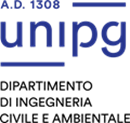Lectures for the PhD program “International Doctoral Program in Civil and Environmental Engineering“ – DICA (University of Perugia, Italy) – 5 CFU (30 hours)
Lecturer: Prof. Dr. Stefano Falcinelli
Overall duration of the teaching: 30 hours (5 CFU).
Course period: June-July 2021.
Course schedule:
Monday, June 21: Radiation and Matter part I - 2:30-6:30 pm;
Friday, June 25: Radiation and Matter part II - 2:30-6:30 pm;
Monday, June 28: From the Schrödinger equation to the Dirac equation - 2:30-6:30 pm;
Tuesday, June, 29: Laser: fundamentals and theory - 2:30-6:30 pm;
Wednesday, June 30: Synchrotron radiation and Free Electron Laser (FEL): fundamentals and theory - 2:30-6:30 pm;
Tuesday, July 7: The Elettra Synchrotron laboratory and the FERMI FEL of Trieste (Italy) - 2:30-6:30 pm;
Wednesday, July 8: The Australian Synchrotron Facility and the SLAC National Accelerator Laboratory (Stanford University, USA) - 2:30-5:30 pm;
Thursday, July 9: Applications of synchrotron radiation - 2:30-5:30 pm.
Contents:
In this series of lessons, the basic operating principles of the "Free Electron Laser" (FEL) sources will be explained, highlighting similarities and differences compared to conventional laser light sources and those of synchrotron radiation that are commonly used in the study of a wide class of both chemical and physical processes and in numerous applications in the biomedical and engineering sectors.
In particular, the Fermi FEL operating at the "ELETTRA Sincrotrone Trieste (Elettra and FERMI light sources)” will be illustrated, being one of the most important FEL projects existing in the world.
It will be highlighted how the Fermi "Free Electron Laser" of Trieste allows to carry out pioneering experiments and studies of great interest both for basic and applied science (such as materials science, engineering, medicine, biology and the study of elementary reactions in environmental and atmospheric chemistry) using light with very high brightness (about six orders of magnitude higher than the third generation light sources, such as synchrotrons), tunable and with extremely high resolution in power, wavelength, time duration (below picoseconds) and polarization.
The aim of the course is to point out that the development of high-brightness FEL sources and ultrashort pulses opens up new perspectives in the study of the radiation-matter interaction and molecular dynamics, as well as in the definition of the mechanisms of chemical reactivity of excited species.
The very high intensity of this type of radiation is able to allow the study of multi-photon processes not accessible with conventional lasers, while the pulse duration allows "pump-probe" experiments on time scales typical of electronic motion in atoms and molecules.
These fourth generation light sources, which are integrating and replacing conventional synchrotron light sources, allow a scientific and technological challenge for the development of diagnostic methods, instrumentation and detectors suitable for the study and construction of light-driven molecular machines.
This is a highly topical filed in science that has led to the awarding of the 2016 Nobel Prize in Chemistry to scientists Sauvage, Stoddart and Feringa for having conceived and developed molecular mechanical devices, studying the controlled movement of molecules.
In the final part of the course the details and possible future perspectives for the development of new materials, as well as for innovative energy storage and production technologies.


